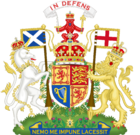Protection of Wild Mammals (Scotland) Act 2002 facts for kids
| Act of Parliament | |

|
|
| Long title | An Act of the Scottish Parliament to protect wild mammals from being hunted with dogs; and for connected purposes. |
|---|---|
| Introduced by | Mike Watson |
| Territorial extent | Scotland |
| Dates | |
| Commencement | 1 August 2002 |
|
Status: Current legislation
|
|
| Text of the Protection of Wild Mammals (Scotland) Act 2002 as in force today (including any amendments) within the United Kingdom, from legislation.gov.uk | |
The Protection of Wild Mammals (Scotland) Act is a special law made in Scotland. It was passed in February 2002. This law made Scotland the first part of the United Kingdom to stop traditional fox hunting and hare coursing.
This Act protects wild mammals from being hunted with dogs. It means people cannot use dogs to chase and kill animals like foxes or hares for sport.
Contents
How the Law Was Passed
This important law began as a proposal in 1999. It was introduced to the Scottish Parliament by Mike Watson, who is a Member of the Scottish Parliament (MSP). Another MSP, Tricia Marwick, also supported the idea.
In September 2001, a special committee looked at the proposal. They wrote a report that was not positive about the law. However, the Scottish Parliament disagreed with the report. They voted to support the main ideas of the law.
On February 13, 2002, the Parliament held a final vote. Eighty-three MSPs voted yes, and thirty-six voted no. This vote meant the law to ban hunting with dogs was passed. The MSPs decided not to pay money to people whose jobs or businesses might be affected by the ban.
A group called the Scottish Countryside Alliance tried to stop the law. They took their case to the Court of Session in Edinburgh. This is a high court in Scotland. However, their appeal was not successful. In July, the judge agreed with the Parliament's decision. The law officially started on August 1, 2002.
What Happened After the Ban
After the ban, many people wondered what would happen to fox hunts. An article in The Guardian newspaper in 2004 reported some interesting facts. Out of ten fox hunts in Scotland, nine continued.
They used a special rule that the law allowed. This rule lets them use packs of hounds to find foxes. But instead of the dogs killing the foxes, the dogs "flush" them out. This means the dogs chase the foxes so they run towards people with guns. Then, the people shoot the foxes. Many people who are against hunting strongly dislike this rule.
People Found Guilty Under the Act
Some people have been found guilty of breaking this law. Two people were found guilty for hunting foxes. Ten other people were found guilty for hare coursing.
There was one case involving a traditional fox hunt. The people involved were found not guilty. However, the judge in that case made the law clearer. He said that if people use dogs to flush foxes to guns, they must have real plans to shoot the foxes. He said that just pretending to shoot them, or using "token guns," is not allowed. This means they cannot use the rule as an excuse to continue traditional fox hunting.
Impact on Fox Numbers
There is some disagreement about how the ban has affected the number of foxes killed. Some hunts say that more foxes are now killed. They believe shooting foxes is more effective than chasing them with dogs.
Since the ban, two new fox hunts have even started in Scotland. These are called the Strathappin and the Dumfriesshire and Stewartry hunts.
Looking at the Law Again in 2016
In December 2015, the Scottish Government announced they would review the law. This review looked at how well the law about hunting with dogs was working. Lord Bonomy led this review.
In November 2016, a report was published. It included several suggestions for changes. These suggestions aimed to make the law even better.

